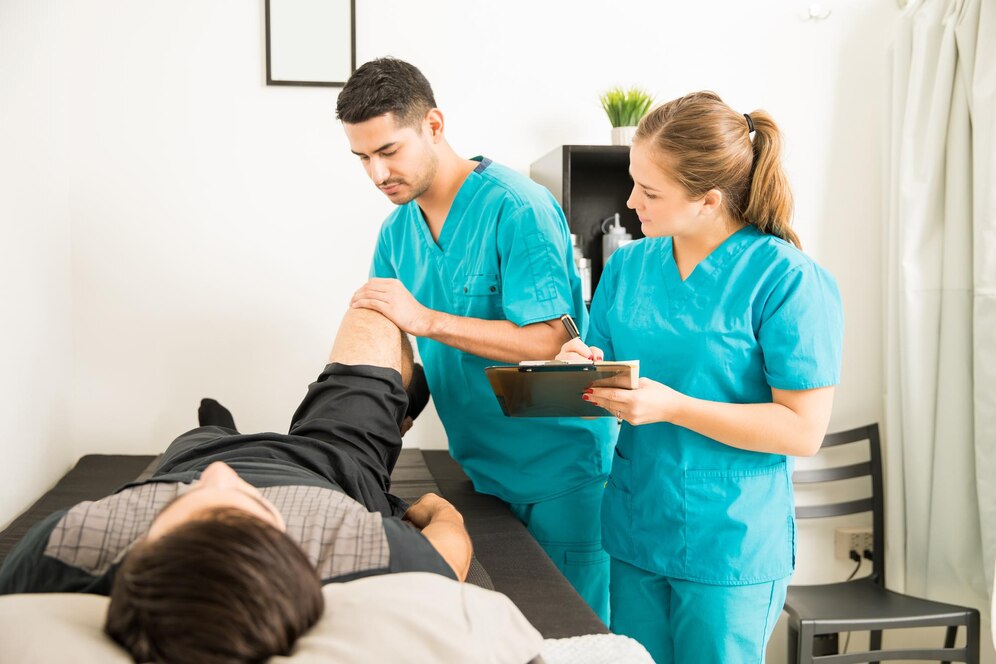Orthopedic and Auto Injuries: Diagnosis, Treatment, and Recovery
Auto accidents are a leading cause of orthopedic injuries, affecting the bones, joints, muscles, ligaments, and tendons. From minor fractures to complex trauma, timely and expert orthopedic intervention is essential for optimal healing and long-term function. This article explores the types of orthopedic injuries common in auto accidents, the diagnostic and treatment process, and the crucial role of rehabilitation in recovery.

Common Orthopedic Injuries from Auto Accidents
Orthopedic trauma from car accidents can range from mild to severe, including:
- Fractures: Broken bones are among the most frequent injuries, often requiring immobilization or surgical fixation.
- Dislocations: Joints may be forced out of position, necessitating immediate reduction and sometimes surgery.
- Soft Tissue Injuries: Ligament sprains, tendon tears, and muscle strains are common, particularly in high-impact collisions.
- Spinal Injuries: Damage to the vertebrae or discs can result in pain, nerve damage, or paralysis.
- Whiplash and Neck Injuries: Sudden movement can strain neck muscles and ligaments.
Symptoms of orthopedic trauma include intense pain, swelling, bruising, deformity, inability to move or bear weight, and sometimes numbness or tingling if nerves are involved.
Diagnosis and Immediate Response
Prompt evaluation is critical after an auto accident:
- Emergency Assessment: Ensures life-threatening injuries are stabilized first.
- Imaging: X-rays, CT scans, and MRIs help orthopedic doctors assess the extent of fractures, dislocations, and soft tissue damage.
- Physical Examination: Determines the severity and guides the treatment plan.
The R.I.C.E. protocol—Rest, Ice, Compression, Elevation—is often recommended for initial management of swelling and pain in less severe cases.
Orthopedic Treatment Options
Treatment depends on the type and severity of injury:
- Immobilization: Casts, splints, or braces are used for stable fractures and some soft tissue injuries.
- Surgical Intervention: Severe fractures, complex dislocations, or major soft tissue tears may require surgery with plates, screws, rods, or ligament/tendon repair.
- Pain Management: Medications, nerve blocks, and alternative therapies such as massage or acupuncture may be used alongside traditional care.
- Physical Therapy: Essential for restoring mobility, strength, and function, and preventing long-term disability.
- Rehabilitation: Involves a personalized plan with exercises, manual therapy, and gradual return to activity, often guided by a multidisciplinary team.
Recovery and Rehabilitation
Rehabilitation is a cornerstone of orthopedic recovery:
- Physical Therapy: Reduces pain, improves range of motion, and restores strength.
- Occupational Therapy: Helps patients regain independence in daily activities.
- Long-term Follow-up: Ensures proper healing and addresses complications like chronic pain or reduced mobility.
Active participation in rehabilitation and adherence to medical advice are key to achieving the best possible outcome.
Prevention and Safety Tips
While not all accidents are preventable, you can reduce your risk of severe orthopedic injury by:
- Wearing seatbelts and using appropriate car seats for children
- Following traffic laws and driving defensively
- Keeping your vehicle in good condition
- Staying alert and avoiding distractions
Conclusion
Orthopedic injuries from auto accidents require prompt diagnosis, expert treatment, and comprehensive rehabilitation. With the right care, most patients can achieve a full recovery and return to their normal activities.
FAQs
1. What are the most common orthopedic injuries after a car accident?
Fractures, dislocations, soft tissue injuries, and whiplash are among the most frequent orthopedic injuries following auto accidents.
2. How are fractures treated after an auto accident?
Stable fractures may be managed with casts or splints, while complex fractures often require surgical fixation with plates, screws, or rods.
3. Why is physical therapy important after orthopedic trauma?
Physical therapy restores strength, flexibility, and mobility, helping patients regain function and reduce the risk of chronic pain or disability.
4. When is surgery necessary for auto accident injuries?
Surgery is needed for severe fractures, joint dislocations that can’t be reduced non-surgically, or significant ligament/tendon injuries.
5. How long does recovery take after an orthopedic injury from a car accident?
Recovery time varies by injury severity, treatment type, and individual factors, ranging from weeks for minor injuries to months or longer for complex trauma.
Your healing journey starts here—trust us for advanced diagnostics, surgical expertise, and compassionate rehabilitation support. Visit us at https://specialtycareclinics.com/ or call us at (972) 865- 4454 to schedule an appointment. Walk-ins & new appointments available.
